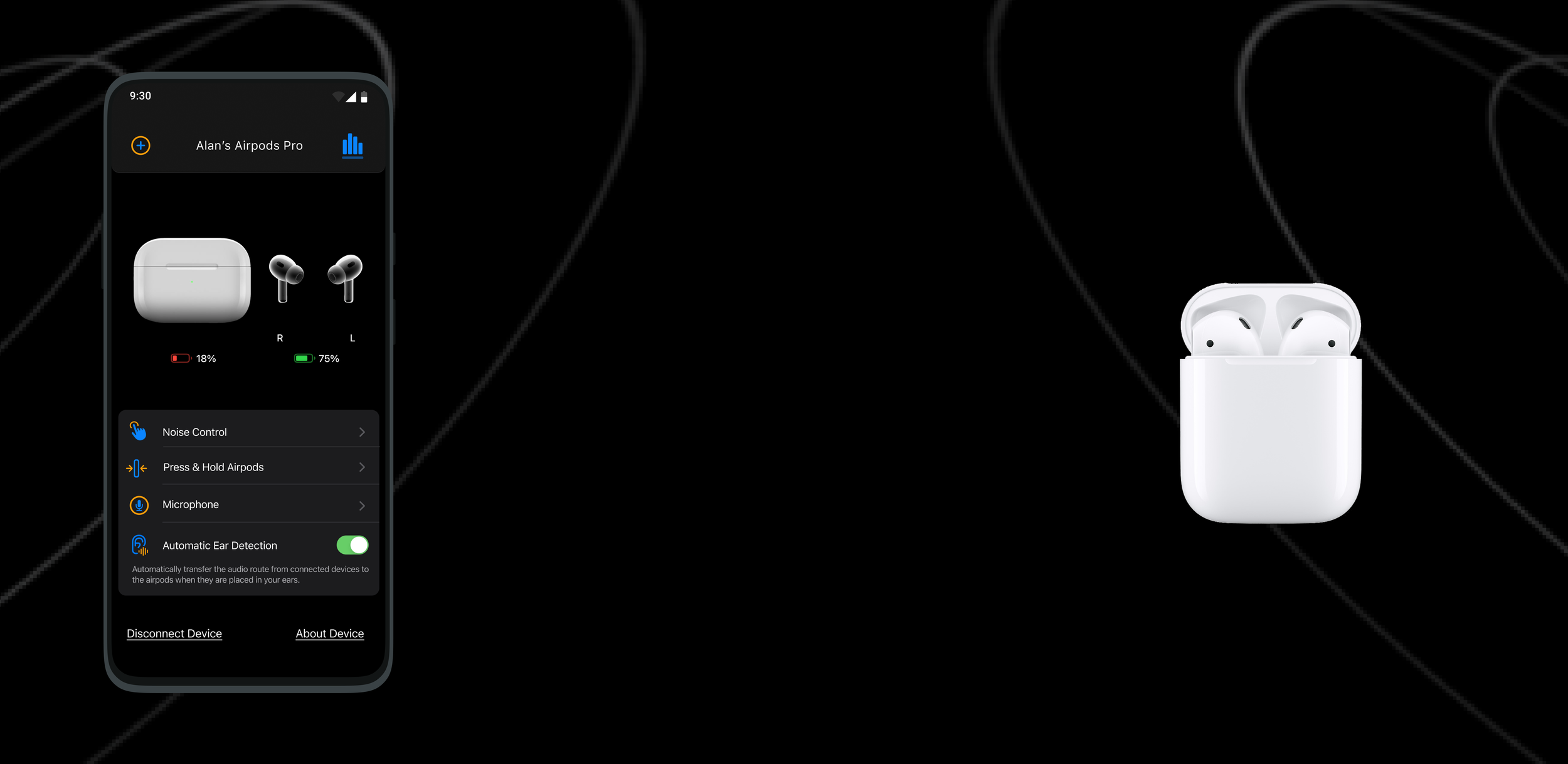
Improving interaction
for AirPods on Android
Interaction is one key element that can bring a pleasurable experience to digital or physical products. Over time, the products have been developed to a higher standard where human interaction is taken to the next level, for example - Augmented reality, Virtual reality, Facebook’s Meta and many more.Even though technology has emerged to a higher standard, there are some tiny loopholes that have to be resolved. This project is focused on interaction issues for android users using Apple AirPods. Exploring and empathising user pain points, goals and motivations, a platform is designed to fill the gap between user and the product,
SECONDARY RESEARCH
In this stage, secondary research is conducted on customer experience, interaction design and how users feel when they cannot communicate with the product. The different level of pain point explains user frustration and emotional experience.
Relating AirPods with Don Norman’s fundamental principles of Design:
Affordance
Affordance is the relationship between a physical product and a user. It also explains how the product can be used and in what aspects. However, what Apple AirPods provides is anti-affordance for android users — they do not have complete interaction with it and miss out on what to do with the product.
Signifiers
Signifiers tell you where the action can be taken place. For example - when you need to push a door, there may be a sign saying “PUSH”. That sign is a signifier. Relating this principle to AirPods, users are confused about which AirPods support the double tap feature, whether right or left.
Feedback
Feedback is all about response time; when an action is taken place, the product must inform the user of the result in a reasonable time. In the case of AirPods, users cannot even check the battery percentage of their headphones when it is plugged-in or paired with the headphones.
THREE LEVEL OF PAINPOINTS
In user experience, pain points are very crucial. It creates frustration, and it leaves the user in a maze.
The three levels of pain points are interaction level, Journey-level and relationship pain point.
-
At this level of pain point, users need help in their product usage journey. For example: when a customer buys AirPods and pairs his/her headphones with a phone, the level of interaction is shallow.
-
This level of pain point does not relate to the scenario of the project, but if we cut down deep android users cannot update the firmware to keep their headphones up to date. They would have to wait till they buy an iPhone or iPad to update their headphones; this scenario can be a journey-level pain point.
-
A good relationship with a product can create an emotional experience. Apple does not let users customise gesture modes, which creates frustration among users, as they tend to change their mobile devices.
USER EXPERIENCE ON A PRODUCT
User experience varies from user to user; not every user has the same goal, motivation or frustration. However, human psychology works similarly for everyone.
Peak-end rule states users convey their experience based on their emotional peak, which can be rather hostile or favourable, and the user doesn't evaluate their experience based on their summation of overall interaction with a product
Considering how humans recollect their memories, from research, it is said that we collect negative memories rather than a positive one. The peak-end rule suggests that every crucial moment is important to evaluate a user experience.
IDEATION
In this stage of design phase, the SCAMPER ideation technique is applied to ideate solutions. The SCAMPER method is a technique that can be applied to a pre-existing product or service to improve the experience. Since AirPods is an existing product, this methodology fits to apply
A few Necessary features were chosen from the scamper ideation method. Scamper questions were enabled to ideate more features that could help users (modify), answering “how to eliminate user frustrations”?. Moreover, it helped to adapt techniques from the outside world. By applying these methods, multiple solutions can be proposed for this particular problem
PROTOTYPING
Prototyping stage begin with sketching to get an outline of the product. The questions raised from the scamper ideation technique were kept straight and centre to design on the primary course of the problem.
Low-fidelity prototype was then made with all possible interaction and features to bring the product to half-life.
TAKEAWAYS
The primary goal about this problem outline was to explore user frustrations and pain points while experiencing products like AirPods. And the greater learning experience was to adapt apple design system and guidelines to provide similar experience that iOS devices deliver to users.
HIGH-FIDELITY PROTOTYPE
After low-fi evaluation process, high-fidelity prototypes by formulating apple design resources and guidelines were designed. Applying apple guidelines can provide users with emotional connection when the interactions occur.
Along with design inspiration, animations were also focused on high-fidelity design. Similar opening animations on airpods were inspired to provide an emotional touch for the experience.











